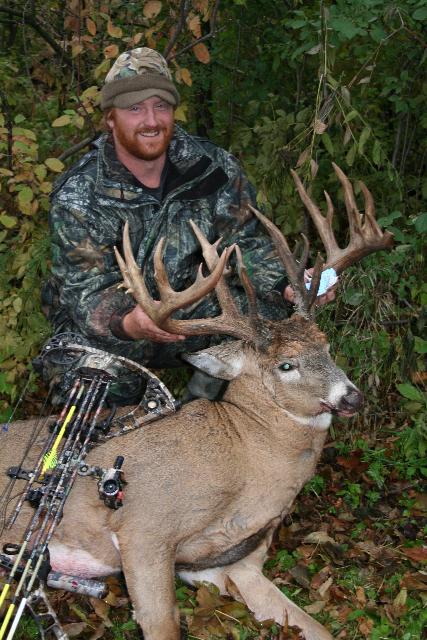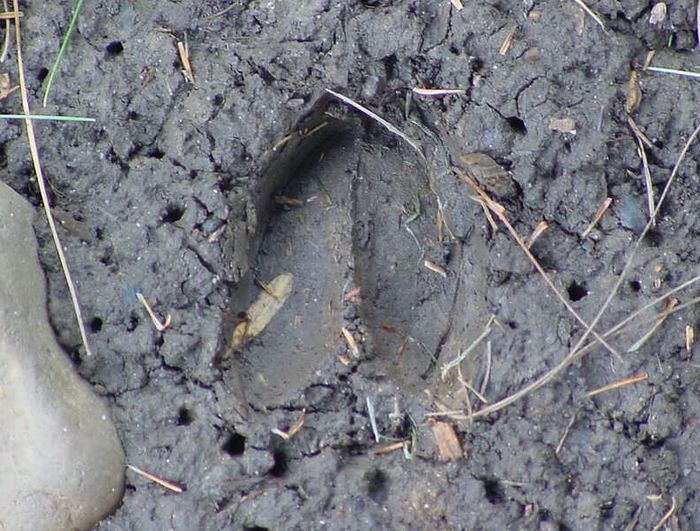Question: I hunt in North Central Texas, what are the best feeder times to set for morning and and evening during the general (gun) deer hunting season? Thanks for your help in adance.
Answer: For most of Texas, a good rule of thumb would be to have your spin feeder run around 6:45 a.m. and about 3:30 p.m. Some hunters prefer a bit later in the morning and in the evening, but the times mentioned above have worked well for me in the past.
When a spin-feeder goes off, some deer wait for the noise of a feeder and then come right in. These are typically the younger and smaller deer, which many hunters are not looking to shoot, at least not right away. These early deer want to get there and grab a bit before the dominant, deer, bigger bucks kick them out. This is especially true later into the evening.
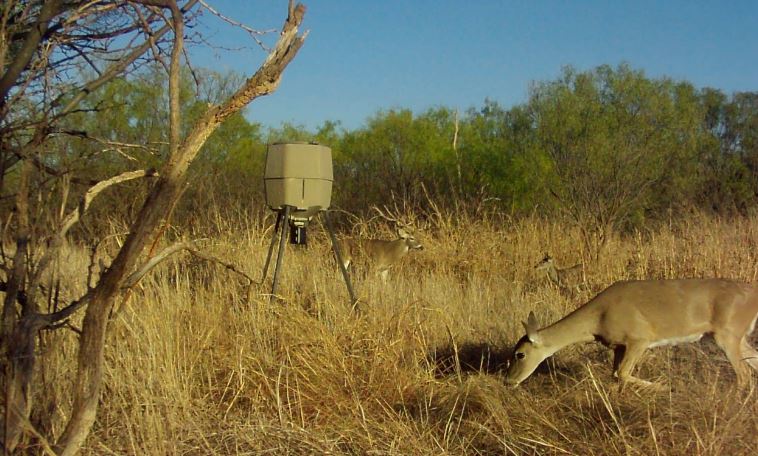
Automatic Deer Feeder Times by Location
In my opinion, selecting the ideal or best time for a deer feeder to run really does vary with feeder location. If a feeder is located in a wide-open field, then it needs to run very early in the morning and later in the afternoon. Deer are more apt to feed in open areas when the sun is low in the sky.
On the other hand, spin-feeders located within an adjacent woodlands are more likely to be used for longer periods of time during both the morning hunt as well as evening hunts. Deer prefer low-light situations, so I actually prefer to position the deer feeders I use in such a way to take advantage of shadows cast by trees.
For example, let’s say I have a woodline to the west of my stand. If I place Feeder A 5 yards off a woodline and Feeder B 50 yards off a woodline, which feeder will have deer first in the afternoon? Feeder A. First, it’s close to cover and, secondly, it’s going to be in the shade.
Shade is important because it helps to conceal the deer. Deer and other wild animals do not want to stick out like a sore thumb. Shade is also important, at least here in Texas, because sometimes it can still be quite warm in the afternoons during deer season. Feeding in the shade allows deer to remain cooler.
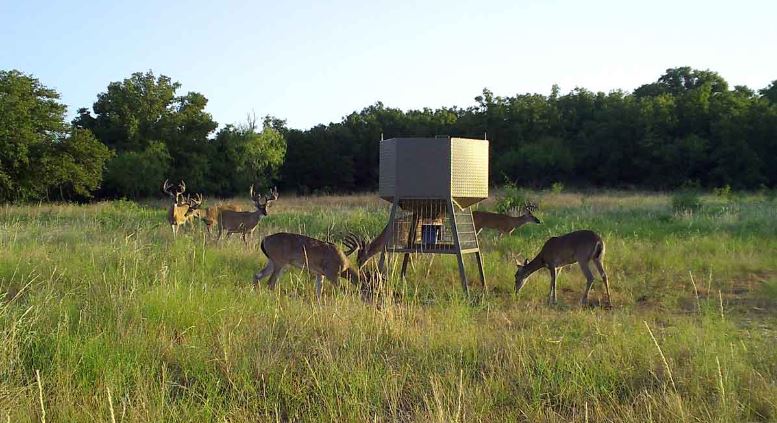
Best Deer Feeder Times
In the example above, the best time for Feeder A to run would be just before the shade covers the feeder, probably around 4:30 p.m. or so. The best time for automatic deer Feeder B to run would be just before sunset, so probably 5:00-5:15 p.m. or thereabouts.
Hunters are using feeders to attract deer, but ideally they want to attract mature deer, specifically mature bucks. A feeder needs to run at the ideal time in the afternoon as to attract older bucks early enough in the evening, with enough daylight to see the antlers on their heads clearly.
If you can get the does to come in early in the afternoon then it’s only a matter of time before the older bucks come following closely behind, particularly during the rut. That is, if there are any mature bucks in the area.
Texas Deer Feeder Times?
Although most hunters will consider an evening time later than 3:30 p.m., you’ll be surprised at what you will see during the early afternoon, especially with proper feeder placement. Early feeder times are great in the morning, except that on a cloudy morning you may have the deer (especially if you have a high deer density) consuming most of the feed before you can see them very well.
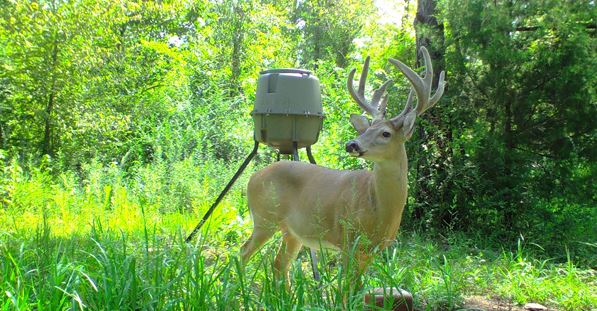
From my experience using deer feeders, the larger bucks tend to be visit very early in the morning early in the season, so the earlier your feeder can go off, the more likely you are to have larger bucks come in. Of course, they may finish eating before you can see well or can legally shoot.
To bring a buck a buck in early and hold him there, set your automatic feeder to feed for about twice as long in the morning than it does in the evening. Again, I like feeder times about 6:45 a.m. for a morning feed. Just make sure to get there well before the feeder runs, or you’ll end up blowing deer out of the area.
For the evening hunt, set the feeder to go off based on shade conditions at your feeder. Feeder times anywhere between 3:30 p.m. and 5:15 p.m. make sense. Bucks, especially mature bucks, can show up at any time, but are more prominent around feed sites during the last 45 minutes of daylight.



